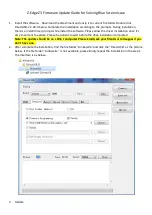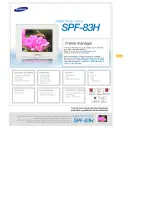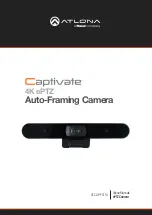
44
NIRvana HS System Manual
Issue 1.0
18. If there is little or no difference between the data displayed when the light source is
on or off:
a. Verify that the light source has power and is turned on.
b. Verify that the entrance slit is open a minimum of 10
m.
c. Check the Exposure Time (Common Acquisition Settings expander).
d. Verify that Shutter Mode is set to Normal (Shutter expander).
e. Check the shutter cable connections.
f.
Verify shutter operation. You should hear the shutter open and close while Run
is active.
If you hear a shutter operating and you have performed step a through step e,
turn the light source on, wait a minute, and then turn the light off while you
view the data display.
•
If the problem is fixed, stop acquisition or proceed to
Rotational Alignment and Focus
•
If you do not hear a shutter operating and you have performed step a
through step e, stop data acquisition and proceed to step g.
g. Verify that the spectrograph has an entrance slit shutter.
An externally mounted shutter is easily confirmed.
Verifying an internally mounted shutter requires access to the inside of the
spectrograph. Refer to the spectrograph manual for information.
19. If additional assistance is required, contact Customer Support. Refer to
on page 100 for complete contact information.
6.2.1
Rotational Alignment and Focus
The camera mounting hardware provides two degrees of freedom:
•
Rotation;
Rotation relates to the physical rotation of the camera while watching a live
display on the monitor so that spectral lines will be perpendicular to the rows
on the array.
•
Focus.
In this context, focus means to physically move the camera back and forth
through the focal plane of the spectrograph while watching a live display until
the optimal focus is achieved.
NOTE:
When aligning accessories such as fibers, lenses, and optical
fiber adapters, first align the spectrograph to the slit. Then
align the accessory without disturbing the camera’s
position.
The following sections provide information and procedures necessary to rotationally
align and focus a NIRvana HS system.
Summary of Contents for Princeton Instruments NIRvana HS
Page 1: ...www princetoninstruments com NIRvana HS System Manual 4411 0169 Issue 1 0 January 8 2020 ...
Page 3: ...Issue 1 0 NIRvana HS System Manual 3 This page is intentionally blank ...
Page 4: ...4 NIRvana HS System Manual Issue 1 0 ...
Page 10: ...10 NIRvana HS System Manual Issue 1 0 ...
Page 26: ...26 NIRvana HS System Manual Issue 1 0 This page is intentionally blank ...
Page 34: ...34 NIRvana HS System Manual Issue 1 0 ...
Page 52: ...52 NIRvana HS System Manual Issue 1 0 This page is intentionally blank ...
Page 72: ...72 NIRvana HS System Manual Issue 1 0 This page is intentionally blank ...
Page 92: ...92 NIRvana HS System Manual Issue 1 0 This page is intentionally blank ...
Page 101: ...This page is intentionally blank ...
Page 106: ......
















































